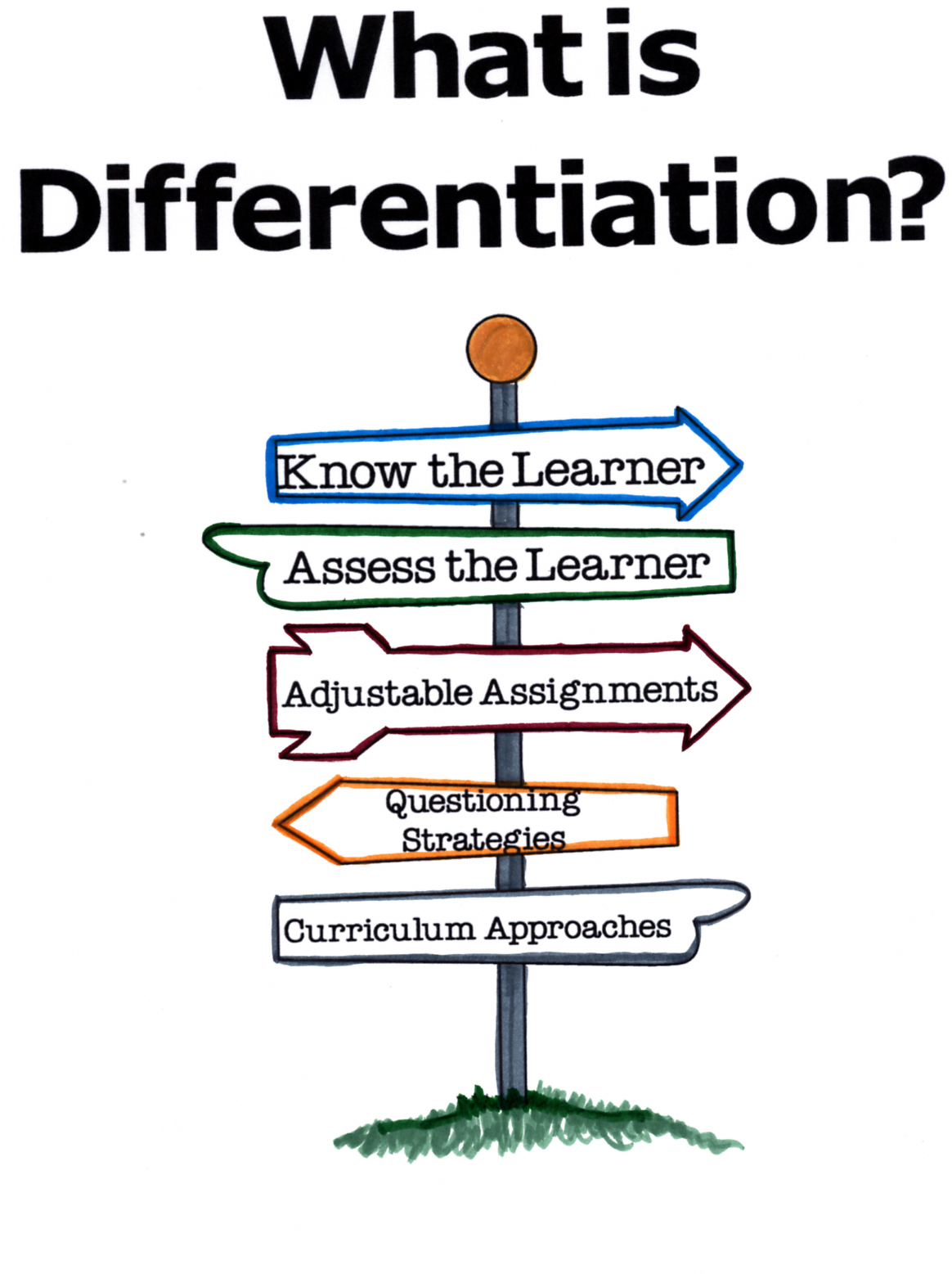Differentiated assessment is an ongoing method through which teachers gather information to
identify how their students learn by observing their strengths and weaknesses.
Each student learns in different ways this is known as the different learning styles such as audio, visual, and kinesthetic. Students also learn at different
paces some individuals are very fast learners and others are slower. Other
students vary in knowledge and skills that they possess, even how they connect
to their previous knowledge. Therefore, differentiated assessment is needed
because no one form of assessment works (Chapman & King, 2005)
| Retrieved From: http://static1.squarespace.com/static/50e514b6e4b 0a05702b99193/t/55b1b8e0e4b0a7f88e9fc00f/1437710561929 |
This picture is a perfect example of why
differentiated assessment is needed within the educational system. Without it
our educational system can alienate children who don’t learn as fast or learn
in different ways than the norm.
There are also multiple factors when
thinking about differentiation assessment within the classroom. They include
knowing the learner, assessing the learner, adjustable assignments, questioning
strategies, and curriculum approaches. This five factors all enable the teacher
to have a more beneficial differentiated assessment for their students. It does
not just change they way they assess, but also the strategies they use to
teach. All of these factors allow the teacher to provide the best learning
environments for their students by allowing them to reach their full
educational potential. Differentiated assessment fosters student’s motivation
within the classroom because they are producing work that they are passionate
about and actually care for. No body enjoys or takes pride in work that they
don’t enjoy so by giving them options that play to their strengths it allows
them to. The teacher provides students with instruction, but adjusts it to
better suit the learning needs of the students. It is ultimately the teachers
responsibility to provide this varied instruction to the students to aid in
their learning, but also allow them to take accountability for their own
learning (Drake, Reid & Kolohon, 2014).
 |
| Retrieved From: https://loorducation.files.wordpress.com/2013/08/binder-cover.jpg |
A personal experience that I had within the
classroom with differentiated assessment was actually just last year in
university. It was a small class about 20 of us and we had to do a presentation
on our lives. The teacher gave us multiple options with how we could present.
It could be a poem, a painting, a power point presentation, a scrapbook, or
even a song that you wrote. This gave everyone in the class an opportunity to
play to their strengths and achieve the best that they possibly could through a
way that they were most successful at. By providing us with these different
forms of assessment is made everyone feel comfortable and gave them more
motivation to do the assignment because they actually enjoyed doing it. The
people who were musical wrote a song and performed it, they were in their own
element allowing them to enjoy and get marked on something they actually excel
at instead of writing essays or doing exams.
In saying this, one of the major issues that
comes to mind when looking at differentiated assessment is how as a teacher to
implement it within a big classroom. This makes classes in university very hard
for teachers to implement differentiated assessment. It would take to long and
be way too hard for the teachers to go through every single persons
assignments. This can also raise a problem with how consistent the teachers
marking is too. From marking an essay to marking a painting or even a power
point presentation can be drastically different because they are all different
in their own way (Varsavsky, & Rayner, 2013).
One idea that I had thinking about
differentiated assessment is that it is one small part in making a school
experience for all children differentiated. Differentiated assessment is only a
small portion of it. By making the content, the classroom, and instructional
strategies that the teachers use all play a huge role in making schooling
differentiated to suit all students needs. Differentiated assessment is yet
just one of the many ways a teacher can achieve this for their students
providing them with an environment to help foster them to reach their full
educational potential.
References
Chapman, C., & King, R. (2005). Differentiated assessment
strategies: One tool doesn't fit all.
Corwin Press.
Drake,
S., Kolohon, W., & Reid, J. (2014). Interweaving curriculum and classroom assessment: Engaging the 21st
century learner. Don Mills, Ontario:
Oxford University Press.
Varsavsky,
C., & Rayner, G. (2013). Strategies that challenge: exploring the use of differentiated assessment to
challenge high-achieving students in large enrolment
undergraduate cohorts. Assessment & Evaluation In Higher Education, 38(7), 789-802.
doi:10.1080/02602938.2012.714739